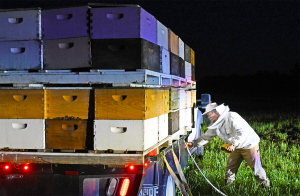I’ll never forget the sage words an old farmer told me when I announced my intention to start farming in the late 1990s. I explained that I was not leaving my marketing job and that I was also doing a fair amount of freelance consulting work. He told me, “It’s funny how many other jobs you need when you farm.” He, himself, was also a full-time district seed manager. I’ve long said that to remain viable, farmers need to get big, get specialized or get off-farm income. Recent data supports this contention: a staggering 82% of US farm household income now comes from off-farm sources. Moreover, half of all farming households have negative farm income in a typical year. Of course, household income can include the spouse having a job outside the farm; but 56% of farm principal operators now have a main job off the farm, compared to 37% in 1974. This skews higher among young farmers as nearly 2/3 of farmers aged 35 and under have primary off-farm jobs (I was among that demo back in the day). One of the key motives for off-farm employment is obvious: to provide additional income against an uncertain profession. Just as important for many is health insurance. As independent, self-employed businessmen, annual health care costs easily run well into the five-figures with sky-high deductibles, even for young, healthy farmers.
There was a slight uptick in farmer sentiment last month, based on the Purdue Ag Economy Barometer. Higher than expected yields was a likely contributor. Yet, it was not enough to curb a declining Farm Capital Index, which reached a yearly low. Nearly 4 out of 5 farmers believe now is a bad time to make capital investments. Why the pessimism? It starts with high interest rates (41% of respondents listed as the top reason), which show little sign of dropping. Declining commodity prices and high crop input costs are major factors.
Many policy decisions are being made these days based on taking climate action. So what climate actions are farmers taking? According to a recent study, 24% of corn and soybean producers have explicitly made changes in their farming operation in response to changes in long-term weather patterns in their area. Among those who have, the top change implemented was no-till (25%) followed by changed mix of crops planted (23%). Both practices offer a wide array of advantages based on labor, soil health, risk management and cost savings. What’s more appealing to farmers than climate action is action that can improve the profitability of their operation. I recently heard one farmer say, “It isn’t about the climate, carbon credit, or no-till… it’s about feeding the soil, water infiltration, weed suppression and recycling nutrients…. and most importantly, striving for zero soil loss.” Perhaps another way of saying it is, it’s not about buzzwords or furthering someone else’s agenda, it’s about improving profitability on their farm. That’s what soil health and regenerative agriculture is all about.
Related Posts

This Week in Ag #39
Clocks turned back one hour in most of the country over the weekend (a notable exception was Arizona). There’s a popular belief that daylight savings time was intended for farmers. Agriculturists are, of course, infamous early risers, said to awaken with the roosters to do their daily chores. Contrary to popular belief, the idea to “fall

This Week in Ag #38
When you’re carving your Halloween pumpkins this week, be sure to thank a bee. That’s because pumpkins are not self-pollinating plants. Unlike cotton and soybeans, where pollen produced within a flower fertilizes the ovary of the same flower on the same plant, pumpkins have specific male and female flowers across their vines. So they need bees to carry pollen between the flowers. Pumpkin growers will rent bee colonies during the growing season to ensure better pollination and higher yields.

This Week in Ag #37
One of the greatest inventions in history is the combine. The concept of threshing and separating grain in one operation revolutionized our food system, as well as redefined our labor force. Consider that in the mid-1800s, 90% of the US workforce was involved in some aspect of farming. Now it’s under 2%. To think my grandfather harvested corn by hand and threw the ears in a wagon! He used the pull-behind model in the 1940s to harvest small grains (that’s him, Fred Nichols, combining oats on our family farm). My mother still talks about dad wearing a Jesse James style mask while operating their first self-propelled combine without a cab.

